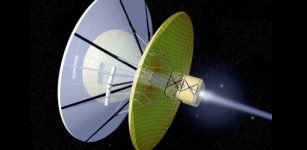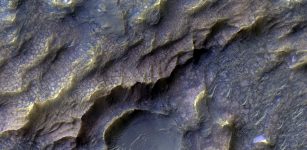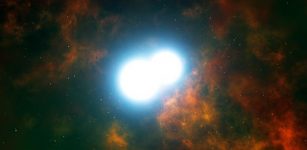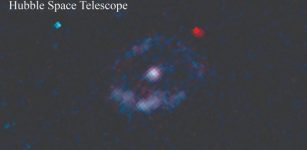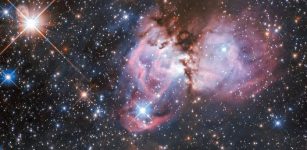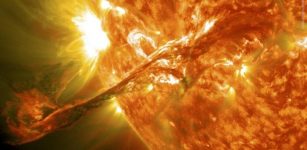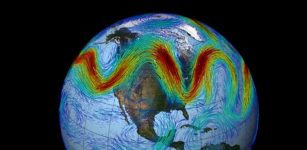Celestial Event Observed: Three Black Holes On Collision Course
Eddie Gonzales Jr. – MessageToEagle.com – Astronomers have spotted three giant black holes within a titanic collision of three galaxies.
This great celestial event was captured by several astronomical observatories. The system is known as SDSS J084905.51+111447.2 (SDSS J0849+1114 for short) and is located a billion light-years from Earth.
 Image credit: X-ray: NASA/CXC/George Mason Univ./R. Pfeifle et al.; Optical: SDSS & NASA/STScI
Image credit: X-ray: NASA/CXC/George Mason Univ./R. Pfeifle et al.; Optical: SDSS & NASA/STScI
“We were only looking for pairs of black holes at the time, and yet, through our selection technique, we stumbled upon this amazing system,” Ryan Pfeifle of George Mason University in Fairfax, Virginia, the first author of a new paper, said in a press release.
“This is the strongest evidence yet found for such a triple system of actively feeding supermassive black holes.”
To uncover this collision, researchers needed to combine data from telescopes both on the ground and in space. First, the Sloan Digital Sky Survey (SDSS) telescope, which scans large swaths of the sky in optical light from New Mexico, imaged SDSS J0849+1114.
Then, data from NASA’s Wide-field Infrared Survey Explorer (WISE) mission revealed that the system was glowing intensely in infrared light during a phase in the galaxy merger when more than one of the black holes is expected to be feeding rapidly. To follow up on these clues, astronomers then turned to Chandra and the Large Binocular Telescope (LBT) in Arizona.
The Chandra data revealed X-ray sources – a tell-tale sign of material being consumed by the black holes – at the bright centers of each galaxy in the merger, exactly where scientists expect supermassive black holes to reside. Chandra and NASA’s Nuclear Spectroscopic Telescope Array (NuSTAR) also found evidence for large amounts of gas and dust around one of the black holes, typical for a merging black hole system.
Meanwhile, optical light data from SDSS and LBT showed characteristic spectral signatures of material being consumed by the three supermassive black holes.
“Optical spectra contain a wealth of information about a galaxy,” said co-author Christina Manzano-King of University of California, Riverside. “They are commonly used to identify actively accreting supermassive black holes and can reflect the impact they have on the galaxies they inhabit.”
Three supermassive black holes merging behave differently than just a pair.
When there are three such black holes interacting, a pair should merge into a larger black hole much faster than if the two were alone. This may be a solution to a theoretical conundrum called the “final parsec problem,” in which two supermassive black holes can approach to within a few light-years of each other, but would need some extra pull inwards to merge because of the excess energy they carry in their orbits. The influence of a third black hole, as in SDSS J0849+1114, could finally bring them together.
Original story – here
Written by Eddie Gonzales Jr. – MessageToEagle.com Staff


